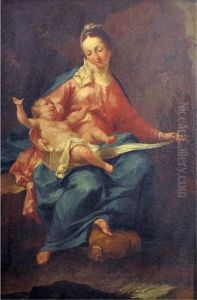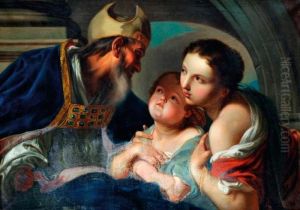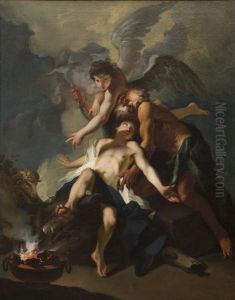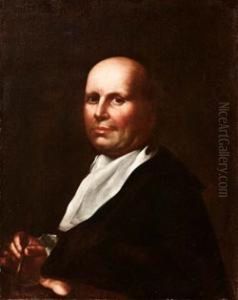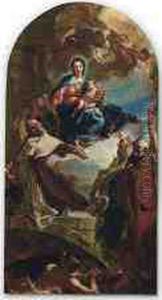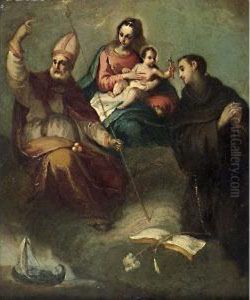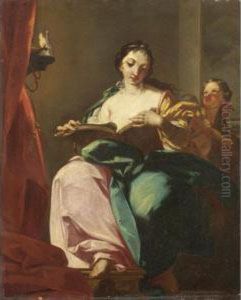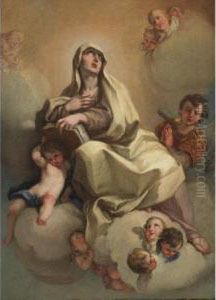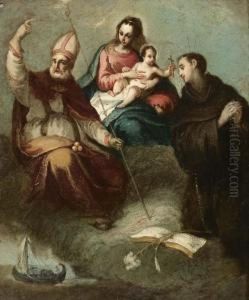Giambettino, Giov. Cignaroli B Paintings
Giambettino Cignaroli, also known as Giovanni Battista Cignaroli, was an Italian painter from the late Baroque era, primarily known for his history paintings and portraits. Born on September 5, 1706, in Verona, he was part of an extended family of painters, which included his uncle Girolamo dai Libri, a famous miniaturist. Cignaroli's work was influenced by the rich artistic culture of his hometown and the wider Venetian painting tradition.
Cignaroli received his early training from his father, who was also a painter. He later studied under Antonio Balestra, who was a significant influence on his style. His works are characterized by a blend of the dynamic chiaroscuro technique and a refined color palette, traits that reveal both Baroque and Rococo influences. Despite these influences, Cignaroli's work also shows a certain classical restraint, which became more pronounced as his style evolved.
Throughout his career, Cignaroli enjoyed considerable success and received commissions from many important patrons, including religious institutions, members of the aristocracy, and prominent civic figures. His ability to infuse his subjects with emotional depth and his skill at narrative composition made him a sought-after artist for large-scale religious works and historical paintings.
Notable among his works are 'The Death of Socrates' and 'The Healing of the Blind Man', which display his mastery in depicting historical and biblical scenes with a dramatic flair. Cignaroli's portraits are also highly regarded; they capture the character and status of his subjects with elegance and precision.
Giambettino Cignaroli's legacy lives on through his contributions to the Italian art scene of the 18th century. He passed away on June 1, 1770, in Verona. His works can be found in various museums and collections in Italy and around the world, appreciated for their historical value and artistic beauty. Cignaroli's approach to painting reflects the transition from the grandeur of the Baroque to the lighter and more decorative Rococo style, marking him as an important figure in the development of late Italian Baroque art.

